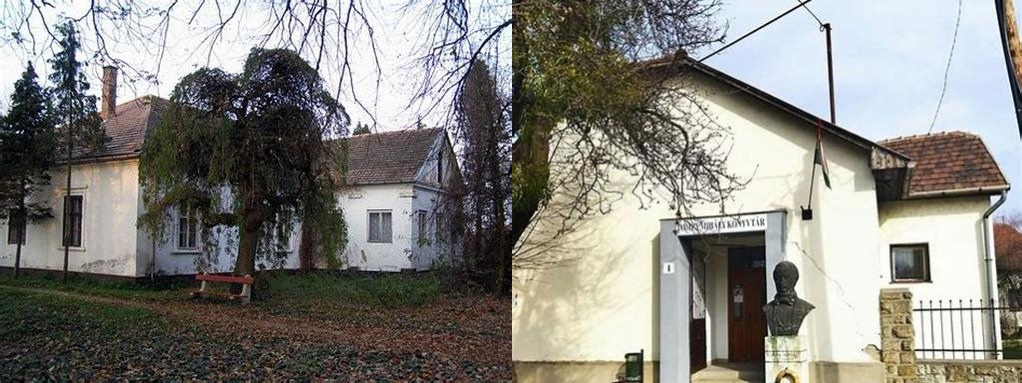
Kondor Kis Mihály kúriája is one of those rare spots in Miskolc where past centuries echo through every brick and worn floorboard. Yet, unless you’re a connoisseur of Hungarian history or a passionate hunter of architectural gems, the name may not leap off the itinerary list. Still, as you amble through its corridors and wander its grounds, it doesn’t take much imagination to step back in time and conjure up scenes of rural nobility, slow summer evenings, and the subtle drama of middle-class life during the 18th and 19th centuries.
Set in the green heart of Miskolc, Kondor Kis Mihály’s manor, built in the early 1800s, radiates a calm and sturdy elegance distinct from the opulent castles and ostentatious homes of Hungary’s grandest aristocracy. It belonged to Kondor Kis Mihály, a figure whose personal history is now somewhat shrouded but whose presence lingers in the heavy wooden beams and spacious, light-filled rooms. Imagine Kis Mihály, a member of the region’s ascending gentry, overseeing the construction of this classical rural manor: not a palace for princely extravagance, but a home that balances comfort, taste, and tradition. This blend—pragmatism without austerity, beauty without boastfulness—is still palpable today.
As you approach the manor, you’re greeted by typically Hungarian neoclassical features. There’s a proportioned symmetry to the structure, from its rectangular layout to its modestly adorned pediment, and you can’t help but linger at the entrance, beneath the shadow cast by mature trees—witnesses to centuries of changing seasons. The walls whisper stories of family meals, community gatherings, and the hum of local political intrigue when landowners like Kondor Kis Mihály played a key role in shaping their districts. During its heyday, the manor was not just a residence but an unspoken symbol of local stability and progress, mirroring Miskolc’s own passage from provincial outpost to bustling city.
What’s fascinating is the way the manor has changed purposes over time—and the layers of history you’ll encounter during your visit. After Kondor Kis Mihály’s passing, the kúria morphed into various roles, its rooms adapting to the practical needs of the 20th century. The building survived transformations, including periods as a school, administrative center, and even, at times, a makeshift community hub. Each phase left faint but persistent traces: faded chalkboards in an old classroom, cupboard doors marked by generations of use, and the subtle patina of floor tiles walked by countless feet. Somehow, these details make the manor feel less like a preserved relic and more like a living organism—one that has observed the tempo of daily life as it has ebbed and flowed from revolution to relative peace.
One of the most enjoyable ways to experience Kondor Kis Mihály kúriája is to stroll around the manor’s spacious, quiet grounds. The lawns have seen children at play, period carriages rattling up gravel paths, and conversations held under the rustling branches on warm evenings. On certain lucky days, the manor may host workshops, local art exhibits, or cultural events—opportunities to interact with Miskolc’s community and maybe imagine yourself as a guest of the original owner. Even without a scheduled event, there’s something special about just sitting on a sun-dappled bench outside, listening to birdsong and letting your mind wander through the stories you’ve absorbed inside.
Another highlight is the subtle craftsmanship that marks this manor as a creation of its time and place. You’ll notice the sturdy yet graceful wooden staircase, the thoughtful arrangement of windows to let in natural light, and perhaps a decorative tile or two that has outlasted its creators. In exploring the details, from original ironwork to fragments of wall stencils, you begin to understand what daily life was like for a family such as the Kondor clan in a region that balanced agricultural rhythms with an appetite for culture and learning. It’s a hands-on encounter with Hungarian history that feels refreshingly free from the formality of palatial museums.
Visiting Kondor Kis Mihály kúriája in Miskolc is more than just a look back at a single family’s legacy—it’s a tactile introduction to the broader story of regional Hungary. Here, away from the well-trodden tourist thoroughfares, you’re invited to slow down, to observe the past not as something distant and unreachable, but as a vibrant part of the present. Whether you linger in a sun-brightened hallway, reflect on the patio, or lose yourself in dreams of old-world hospitality, you’ll find that this humble manor holds its history not on a pedestal, but in the very air you breathe.





